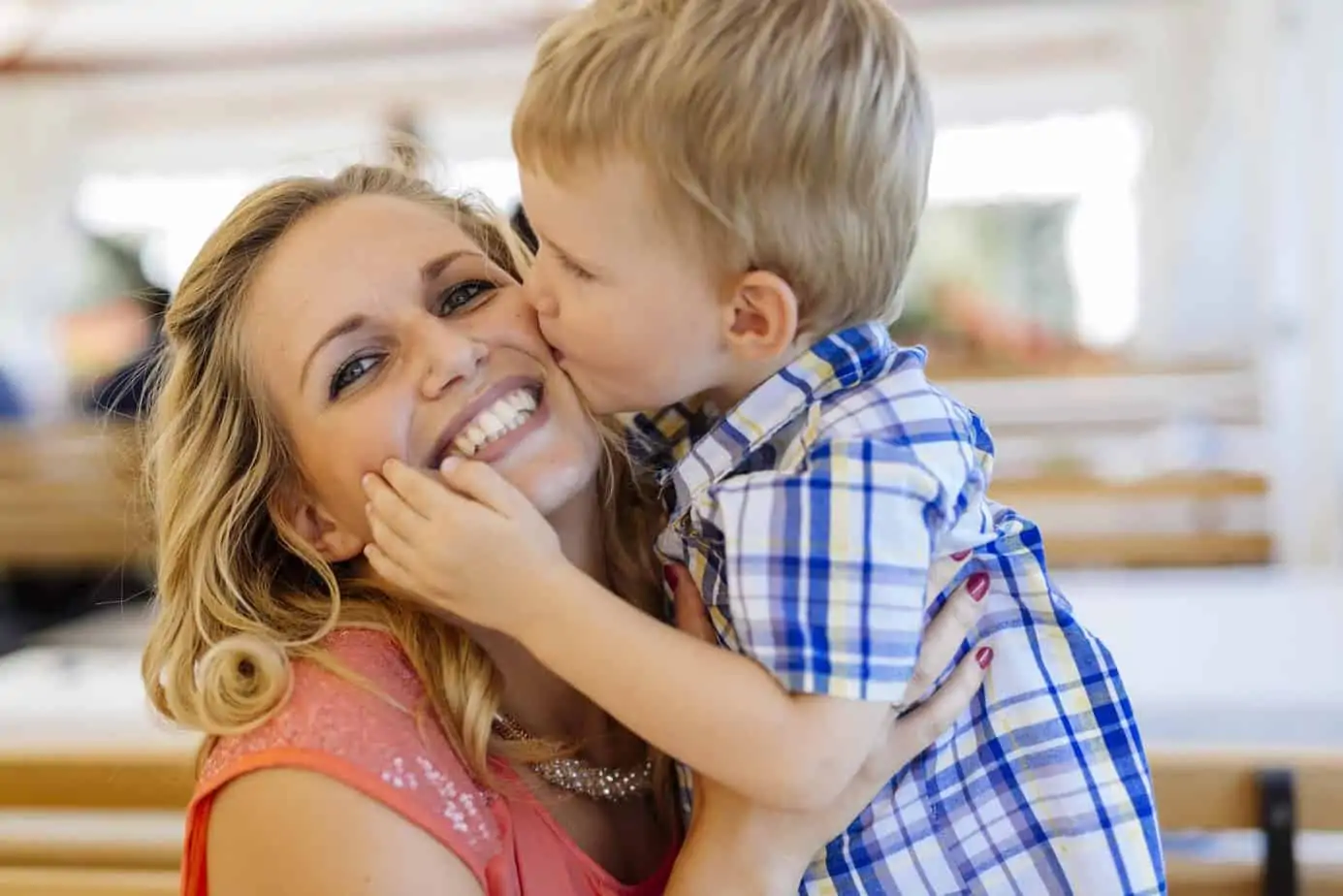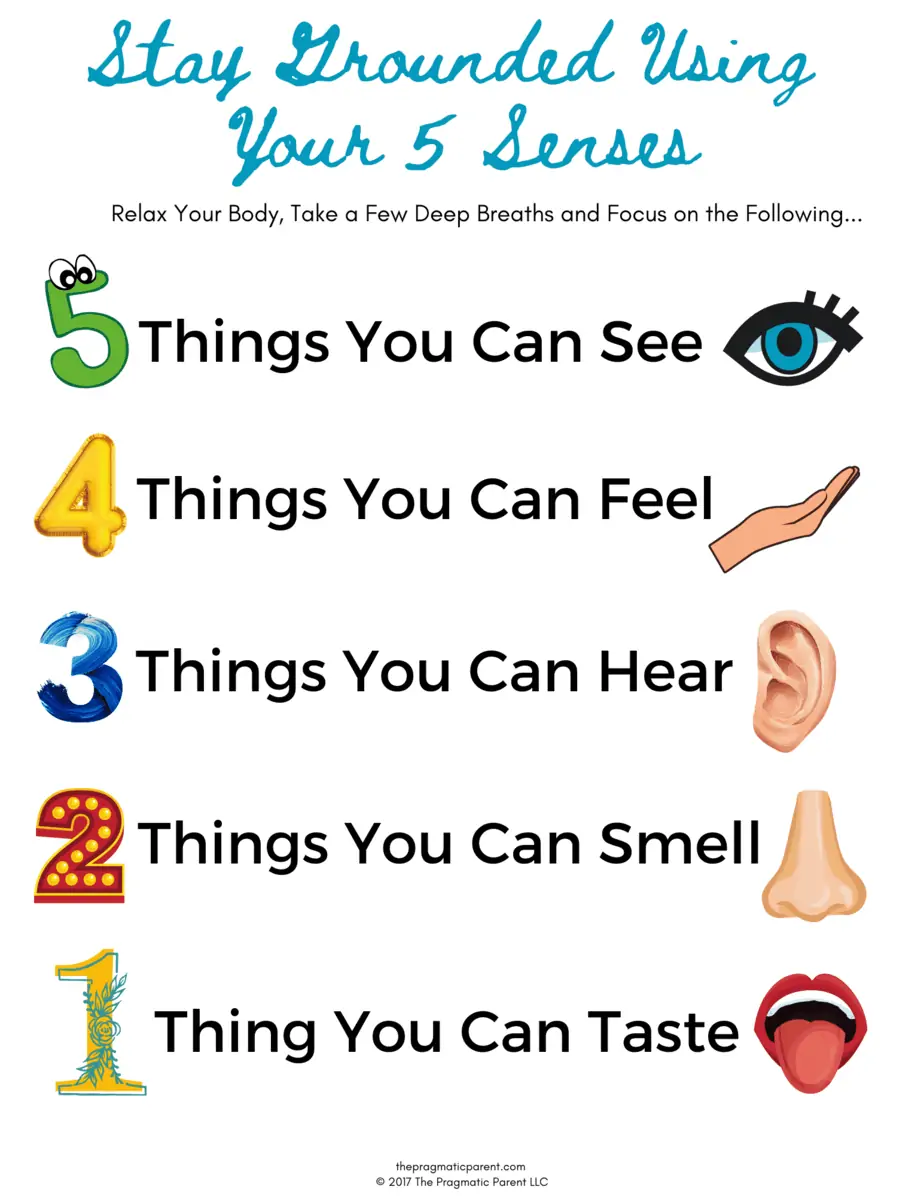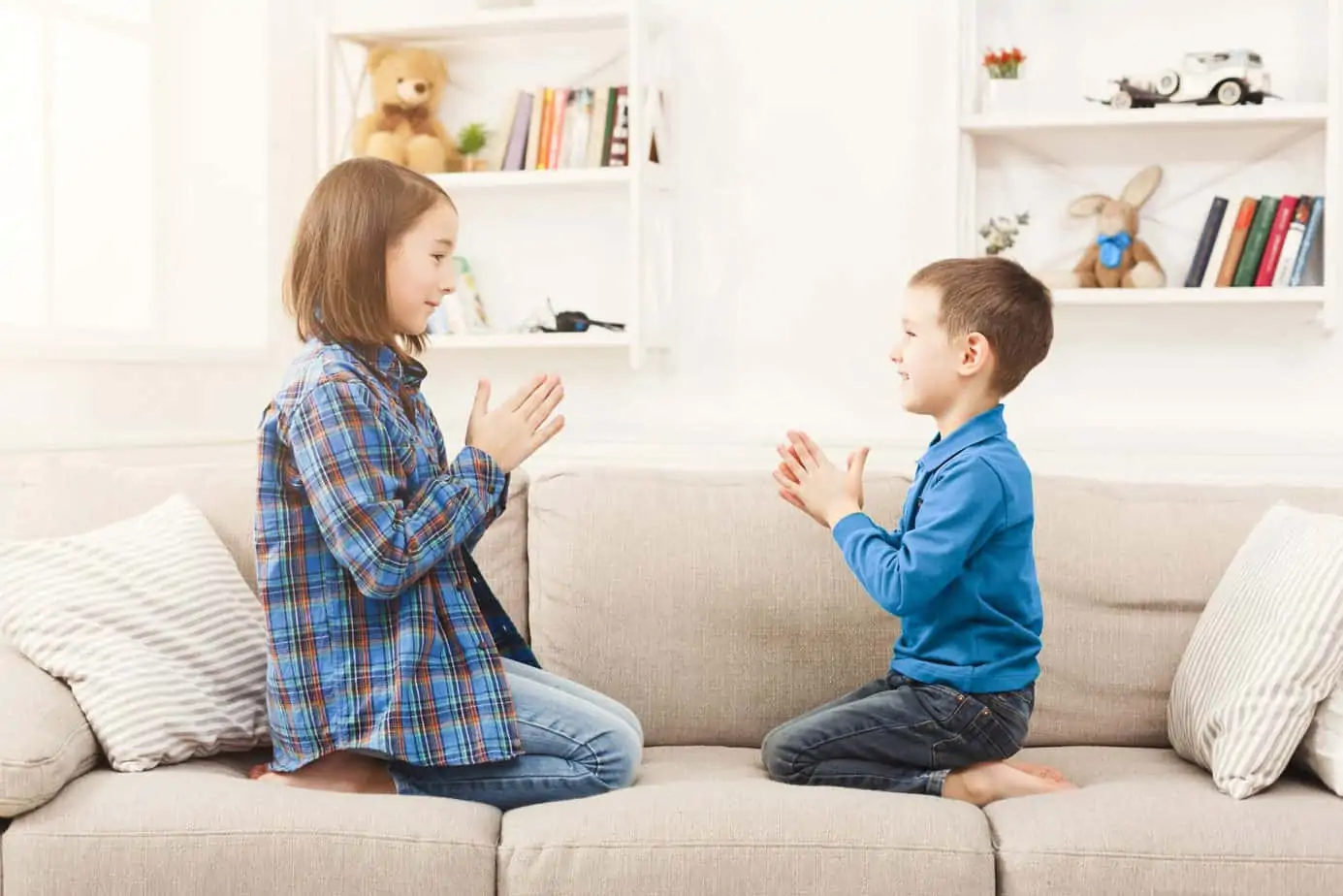Positive parenting techniques to use in place of yelling. Want to try parenting without yelling or stop being an angry Mom? 6 Strategies to keep in your proactive parenting back pocket. Ready to make BIG changes? Calm Parenting: Learning to Stop Yelling as helped hundreds of parents already. See what all the fuss is about and how this ecourse retrains the brain for calm, patient responses.
Not ready for the course? The beginner’s guide to stop yelling is the perfect way to dip your toe in to making a change.

6 Positive Parenting Techniques to Use Rather Than Yelling
At some point in the parenting journey, every parent will inevitably reach a breaking point where we raise a white flag and say to ourselves, “There has to be a better way. Something has to change.”
It may be the middle of the night wake-ups with your three-year-old that have you in a zombie-like state, tantrums in the aisle of the grocery store, or dealing with back talk that makes your nostrils flare.
Your breaking point may be that the arguing in your home is escalating, your kids aren’t listening or you are stuck somewhere between feeling angry and hopeless all the time.
What Does Yelling Do to a Child With Parents Who Yell Too Much
I know no parent wants to yell at their kids.
I get it. I know how terrible it feels to yell at your children.
I don’t want to raise my voice to get my kid’s attention, stop them from fighting with each other or deal with disrespectful behavior, any more than you do.
I know it’s not a good strategy and never makes a situation better.
(It never works!)
It also makes me feel awful about my capabilities as a parent.
In all my research and work training myself how to stop yelling, and examining the real reasons parents yell too much, I can tell you this.
Parents yell because they are pushed to the brink of anger whether by stress, internal triggers, or other circumstances, and feel they don’t have any more effective tools to use.
For parents who yell too much, yelling can become a default strategy.
In Daniel Goleman’s book “Emotional Intelligence,” he cites the work of University of Alabama psychologist Dolf Zillmann, who discovered that the physiological effects of rage can last for days, and that rage builds on rage. Repeated aggravations — “a sequence of provocations” — can dramatically increase anger, so that by the third or fourth rage trigger, the person is reacting on a level 10 in response to a misplaced key or a dropped spoon.
Recent research points out that yelling makes children more aggressive, physically and verbally.
When rage becomes the “normal” in your home, unfortunately recent studies show yelling has the same detrimental effects as spanking does on a child.
The long-term consequences found in the study of children who experience yelling include increased anxiety, depressive symptoms, stress, conduct problems and other emotional disorders.
That’s not what any parent wants for their child, but what parenting strategies can we use on a day-to-day basis to keep our tempers from exploding at the ones we love the most?
Reactive Strategies Don’t Work When You’re Trying to Use Positive Parenting
Say for example, you’re at the store and your child sees a special toy they really want.
Its a new action figure they absolutely must have, or so they think.
Well, action figures aren’t on your shopping list, nor in your budget and it’s not his birthday either, so you gently tell your child they can’t have the toy.
Suddenly, the fireworks begin and your child is causing a scene because they aren’t getting their way. He’s not going down without a fight!
How do you react?
- Throw the toy in your cart to keep him happy and quiet, and end the fit.
- Threaten he’ll have a consequence or lose a privilege if his behavior doesn’t stop,
- Get angry and snap at him for the scene he’s created,
Reactive strategies aren’t strategies at all, they’re short-sighted solutions that breed long-term problems, don’t correct behavior and worse, hurt the connection with your child.
Let’s look at each of these reactive strategies and what’s the problem with each.
1. Give in and Get the Toy
When you relent and buy the thing you child wanted, and then threw a fit about when you said no, the long-term result is that you’ve told your child you can be easily manipulated.
Once a child knows you’re a push over, they’ll continue to push the envelope again and again to get what they want, because they’ve learned they can.
When a child is told “no” and then there’s no follow-through, as hard as it may be, this is one place where feelings of entitlement, greed and power stem from in children.
Are you prepared for repeated tantrums every time you go to the store?
Giving in may be the fastest and easiest way to end a tantrum, especially if you’re in a public place, but those feelings of entitlement and not having gratitude for the things he earns or are gifted, will be harder to break and instill down the road.
2. Threaten Consequences and Punishment
Trust me, I’ve gone down this path and coming back from it is hard and takes a lot of mending and constant awareness.
That’s because, empty threats have a lot of potential for long-term collateral.
Think about it.
- Are you really going to follow through on the consequence when you get home in 20, 45, or 60 minutes?
- Is your child going to understand their punishment after so much time has passed?
After all, children are very short-sighted and just like they want immediate gratification such as from a toy, snack, treat, affection, etc., they need immediate action when it comes to consequences of the connection from behavior –> consequence is lost on them.
- Is it really going to change their behavior for next time?
I know I’ve thrown out empty threats in hopes my children will behave at the store or when we’re in public, but here’s what I’ve noticed about why this tactic never (never) works:
- I can’t follow through on a consequence immediately, so why should my child believe the threat in the first place?
- Any consequence I give to my child once we get home is unrelated to what happened at the store. For example, at the store they wanted a toy but at home they lose TV or device privileges which have nothing to do with one another. Again, another connection lost.
3. Lose it in the Store Aisles and Unleash the Yell at Your Child
Maybe it’s because you have told your child “no” five times already, or you have your hands full with two other children tagging along. It could be you didn’t sleep well last night and are exhausted, or you’re simply embarrassed your child is acting this way.
You don’t want to yell, but you want the behavior to stop immediately. Plus, no means no, right?
That’s when you raise your voice and yell.
“We are not getting the toy. How many times do I have to tell you?!?”
Yelling likely stops the tantrum for a short while, but you’ve probably captured the attention of other shoppers or people in public and now you feel shame, embarrassment and guilt.
Does yelling stop a behavior from happening again?
Probably not.
How do You Accomplish Parenting Without Yelling?
First, take a deep breathe and know that you’ve used one, or all three of these strategies you aren’t failing as a parent.
This parenting journey you’re on is like running a ultra-marathon every week. It’s long, it’s hard and there are always going to be bumps in the road and unforeseen challenges. There are also these perfect little sweet-spots that when you find them and you’re in a good rhythm, make you feel like you’re on top of the world.
All of the reactive strategies I talked about above have one thing in common – they’re REACTIVE. That means you aren’t stopping to look at your child or the situation through a particular lens, you’re just trying to extinguish the situation as quickly as possible.
Stop the tantrum.
Stop the whining.
Stop the fighting.
Stop the crying.
Get kid to sleep.
See what I mean?
It’s all about how quick can you get to the finish line.
Discipline techniques such as time outs, yelling, and dishing out irrelevant consequences are all tied to these common rationals:
- You aren’t looking to find the root of WHY your child is misbehaving or acting out because you want to stop the behavior as quickly as possible.
- You react by yelling because this has been programmed from previous yelling episodes to feel good – studies show the release you get from yelling is similar to a drug euphoria and has an addictive quality. Crazy, right?
- You react to situations by yelling because you don’t have another tools to use.
- Reactive parenting is exhausting and drains you physically and emotionally more than proactive parenting.
6 Techniques for Being a Proactive Parent & Succeed at Parenting Without Yelling
Neuroscientist Antonio Damasio, author of Descartes’ Error: Emotion, Reason and the Human Brain, says it’s our feelings that decide for us, 95% of the time.
We feel before we think.
We feel before we act.
We feel before we REACT.
He describes human feelings by saying, “We are not thinking machines. We are feeling machines that think.”
Since ultimately, we make decisions based on how we feel, it’s important for parents to be aware of their feelings. To tune into the body’s reaction to triggers and alert our brains of the flashing red light that we need to press pause. Otherwise, we will lead with our feelings of anger and react in a way thats unlike the parent we want to be.
This also means, being dialed into our children’s feelings.
1) Set Aside 10 Minutes a Day For Yourself to Recharge
I recently listened to a podcast with guest Dr. Chatterjee talking about stress, from his new book The Stress Solution.
As a busy Mom, a business owner, wife, homemaker and so many more “job” titles we’re call carrying these days, we’re living in stressful times.
Sure, a lot of it is brought on by ourselves each time we pencil something new onto our calendars, but this insatiable need to be busy drives our culture. And it’s impossible not to feel dragged down by it.
What was really eye-opening is what Dr. Chatterjee called micro-stress doses that start the minute you wake up, and add up quicker than you may think.
What happens when you’re hit with a micro-dose of stress over and over again?
Simple.
You reach a breaking point and then you REACT.
You snap, you yell, cry, shove chocolate in your mouth and are less kind and caring to yourself, and those around you.
Let me walk you through an example of what he’s talking about with micro-doses of stress.
- You set your alarm for 6:03am and when it goes off, it jolts you out of your deep sleep. That’s your first micro-dose of stress.
- Then you hit the snooze button, snuggle back into your warm sheets, and the alarm goes off again. Now you’re running behind Micro-dose of stress.
- You run downstairs, let the dogs out, start making breakfast, packing lunches and running around trying not to forget anything… all micro-doses of stress.
- Your dog throws up his breakfast. (Just me? I swear this happens to me once a week between my three dogs.) Micro-dose of stress.
- As you’re pushing the kids out the door, Sally says she forgot her library book and doesn’t know where it is, then the tears start…. Yep, another micro-dose of stress.
I won’t run you through a whole day like this, but you get the gist of where this is heading.
It’s fairly easy to get hits of stress rather quickly, isn’t it?
Each of us are constantly bombarded with different situations that feed us with mini doses of stress and before long, we’ve got 20 under our belt and the next person who asks for a snack may get “the stare.”
So, what does Dr. Chatterjee say to do about these micro-doses of stress?
There are a couple things he suggests so you’ll have to figure out what works best for you, but his tested research says all you have to do is plan for 5 or 10 minutes into your morning to hit reset.
This could getting in a workout, sitting outside, writing in your journal, having a cup of tea, meditating, reading 3 pages of your book or listening to music, and spend 5-10 minutes looking at or being in nature.
(There’s this study that says if you look at fractals which are only found in nature, on plants, trees, etc, it can immediately make you feel more calm. How cool is that?!)
Just stay off your phone, okay?
Why is doing this in the morning important?
You don’t want to wait until you’ve tucked the kids in to “de-stress.” After all, you’ve already built yourself a healthy supply of micro-doses of stress and are more likely to snap, scold, yell, cry, or be harsh with yourself, and those around you by 2pm if you don’t do something about it preemptively.
That’s exactly why hitting the re-set button in the morning after the onslaught of micro-doses from the AM rush, gives you a fresh start.
Don’t we all want to be the best parent we can?
Well, we can only do that when we take care of ourselves, and make sure these micro-doses of stress aren’t getting in the way of listening, empathizing and connecting with our children.
2) 10 Minutes of Solo Connection Each Day
I aim for 10 minutes of one-on-one time a day with each of my kids so I can fill their attention bucket.
Not only does it let me know what’s going on with them, but the time is something we both look forward to and the more connected with are with one another, the less my child misbehaves and I don’t turn to yelling as a reactive solution.
10 minutes a day of uninterrupted time where the child directs playtime is important for connection and relationships. It can be simple like building a fort, playing basketball, coloring together, reading a book or dancing in the kitchen.
Chances are that if you fill their attention buckets ahead of time when you need to do work, take a call, or find yourself busy with another task, they’ll be better behaved and respectful of your time.
3) Empathize Before Your Respond
Instead of yelling at your child, aim to connect instead.
Comfort them with physical touch by gently touching their shoulder or pulling them into a hug and then show them you empathize with their feelings.
“I know you really wanted that toy buddy. It’s hard to want something you can’t have. I know exactly how you’re feeling.”
Let your child know you recognize their feelings, see they’re valid and important, but that you’re also on his team and can unstained what he’s internalizing.
This may not stop the tantrum completely, but it does teach your child that no means no, you still care about him, and recognize his big emotions.
4) Get to the Root of the Behavior
There is always something motivating a child’s misbehavior.
The behavior itself is simply the symptom of something intrinsically going on inside your child.
You may be over the tantrums or whining, but what is causing your child to act this way?
Is it because a lack of skills expressing his emotions, he’s trying to get your attention, feels disconnected from you, there’s a power play at work, or maybe he doesn’t have the ability to manage his feelings quite yet.
There is always a reason for behavior, and it’s a parent’s job to play detective and figure out what’s really underneath the negative and/or disruptive behavior.
Once you identify the root cause of the issue, you can become a more proactive parent and keep outbursts from happening in the future.
5) Consistency is Key When it Comes to Discipline Without Yelling
Children thrive with routine – they love the consistency of it because it makes them feel safe, it helps them feel in control of their surroundings and self, and the same goes with rules and consequences.
When you have set limits in your home – expectations, house rules, and routines – as well as consequences if something is done out of line or a boundary is crossed, then everyone knows exactly what to expect.
To be a proactive parent, make sure the rules of your home are clearly communicated so children know the consequence if those rules are broken.
And if they are broken – you need to act swiftly to enforce the consequence so children see you follow through.
For example, if your child is expected to make their bed, put their laundry away and brush their teeth and hair on their own in the morning, but they don’t do it, what is the consequence for failing to do their chores? Is it they have to clean another part of the house or sweep the dining room in addition to finishing their morning chores?
Routine cards work amazingly well for creating a routine, including chores, and reminds kids what comes next and helps them to become independent.
It’s a win-win for parents! No nagging, no reminders, just a clear task list they need to complete all on their own.
6) Consequences Have to be Related to the Behavior
To implement consequences that stick, parents need to be clear about their expectations and ensure the consequence is related to the misbehavior.
If a consequence such as losing technology privileges stems from hitting his sister, a child can’t understand the connection between the two.
A better solution may be that the child needs to go sit by themselves for 5 minutes and is unable to play with his sister or other friends because he had hit someone.
Children need to be able to understand ahead of time what the consequences are if they make a wrong choice, and there’s no need for a parent to yell.
WANT MORE GUIDANCE TO STAYING CALM?
Being a calm parent takes work. Our children challenge us and test us almost daily. There’s nothing that feels worse than the look on your child’s face after you explode. Calm Parenting: Learning to Stop Yelling is a book and workbook to help you walk through all the steps of recognizing WHY you’re mad, how to handle your emotions even in the heat of the moment, and develop your own unique coping skills so you can have a healthy relationship with your own feelings, and children.
More Positive Parenting Resources to Help You Stay Calm and Stop Yelling
- How to Get Kids to Listen Without Yelling
- New Ideas to Help You Practice Calm Parenting & Stop Yelling When You Feel Mad
- The Real Reasons Parents Yell: How to Stop Yelling At Your Kids
- 10 Tips to Help You Become a More Patient Parent
- How to Stay Calm When Your Child Misbehaves
- 7 Stress Busting Tips for Less Chaos and More Peaceful Parents
- Stop Being a Stressed Mom and Start Living With more Happiness & Joy
Want even more?
Shop All Parenting Resources
Shop all of our parenting resources from self-regulation tools and managing big emotions to building self esteem and confidence. There are resources for all seasons of life!









